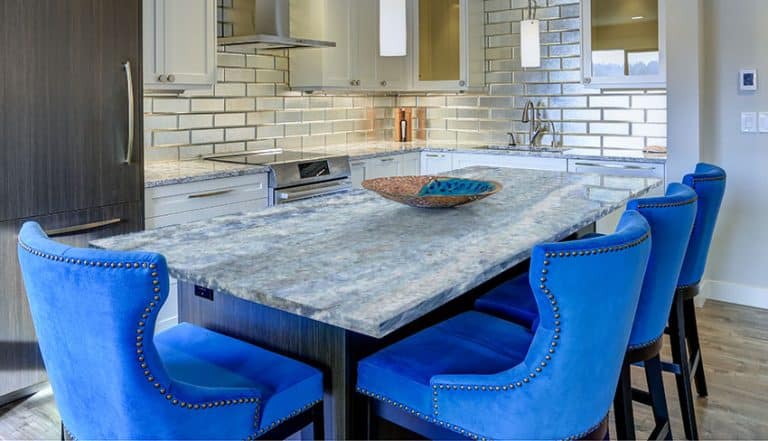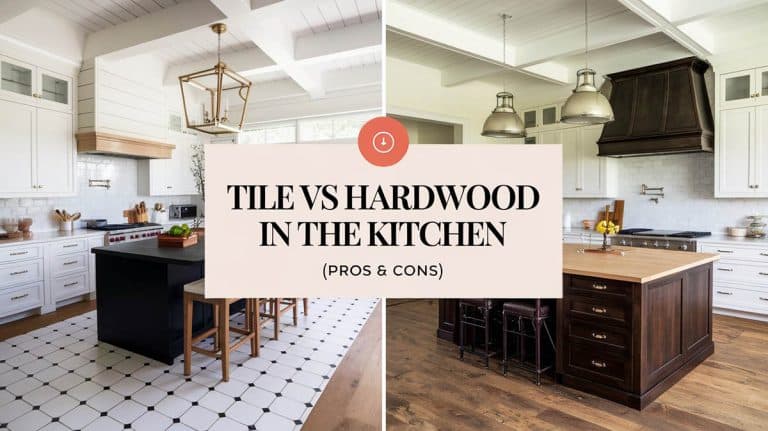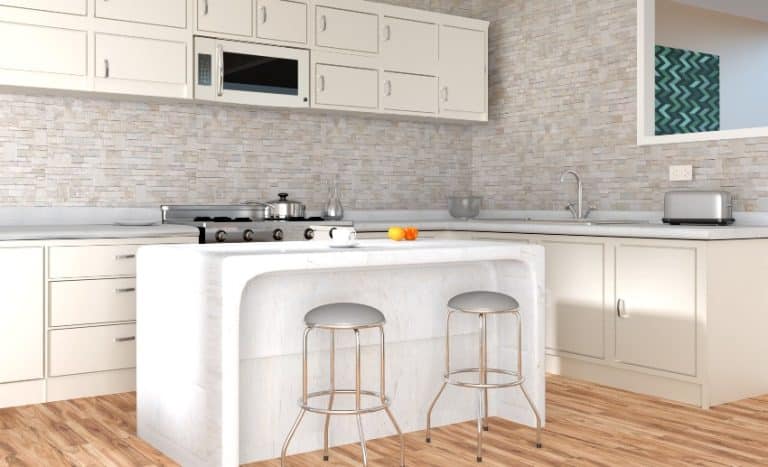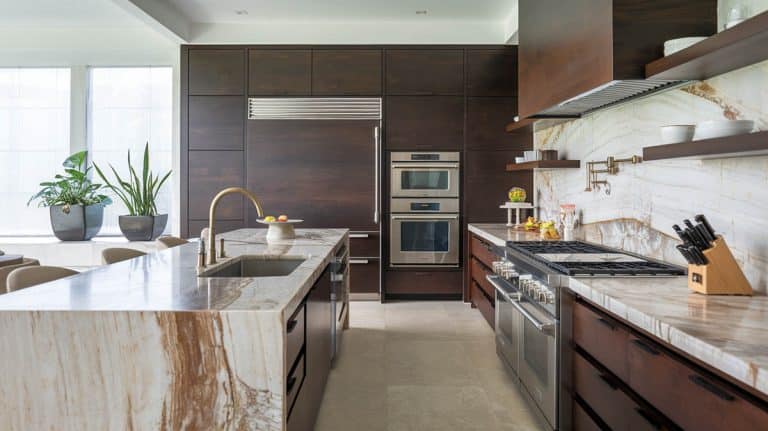Acacia Cutting Board Pros And Cons
Acacia is a great material to consider for cutting boards because apart from the wooden and organic design elements, it is also known to be non-toxic. This material is considered an eco-friendly and sustainable option. It’s also a type of hardwood and it comes as no surprise why acacia wood cutting boards are becoming more and more popular by the day.
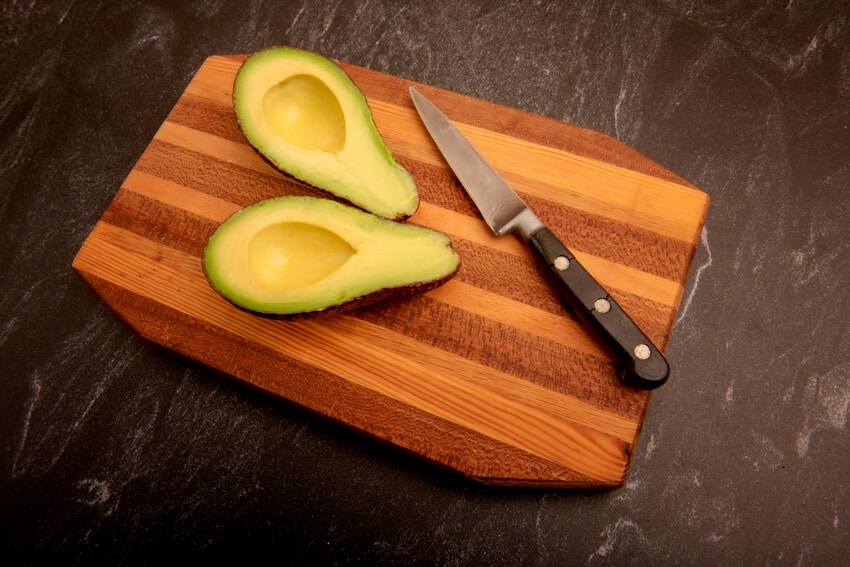
Acacia is also known to be the hardest of all the hardwood types. It has a wood structure that’s multidirectional which means that the wood fibers are facing each other. Acacia wood can come in either yellowish brown to a deep reddish brown depending on whether it came from the sapwood or from the heartwood of the tree it was cut out from.
Acacia has commendable resistance against friction and is considered a perfect alternative for otherwise endangered or exotic woods as they are sustainable, easily sourced, and still aesthetic and valuable.
Despite its density because of being a hardwood, acacia wood cutting boards are known to be quite gentle on knives. These types of cutting boards are safe, water resistant, and most importantly, can last for quite a very long time with the proper maintenance and care.
Acacia Wood Pros
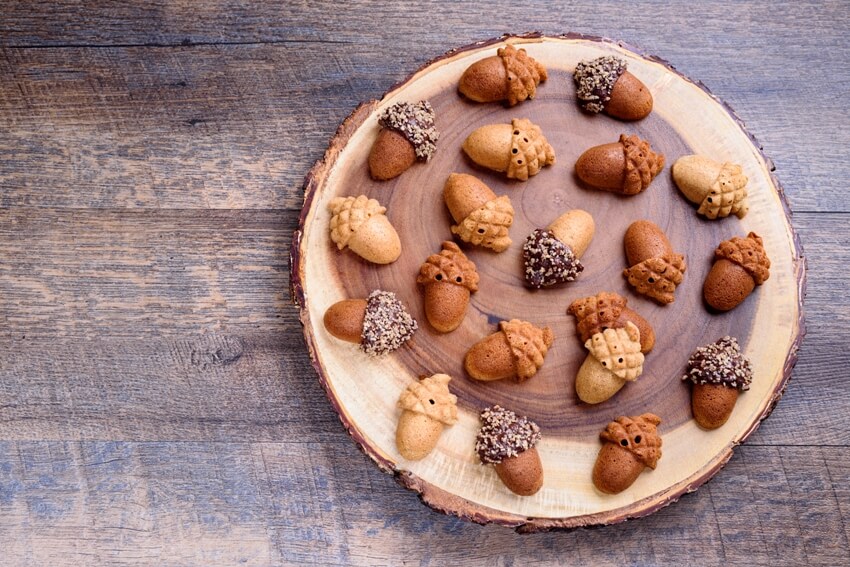
Acacia is resilient and water-resistant – This is one of the main marketing points of this type of wood chopping board. This is why most of the boards are usually cut out in heavy pieces.
They have been known to last for decades without any special protection, handling, or treatment. They are also ideal for such use because they don’t scratch as easily as the other woods do. You can find acacia outdoor furniture used extensively due to its durability and natural beauty.
Acacia has an attractive natural grain – The heartwood part in particular offers a reddish to deep dark brown color with a grain that’s naturally visually appealing. Its type of wood grain is well polished and incredibly smooth.
You can opt to get it polished or use it as is. You can rest assured of the fact that these boards will look stunning regardless.
Antibacterial qualities – This is also another trait that makes this wood stand out from all the rest. Because of its antibacterial qualities, this makes these boards ideal for the preparation and serving of food items.
Acacia really is the end-all-be-all when it comes to wooden chopping boards because not only are they beautiful, but they are also quite safe to use.
Acacia Wood Cons
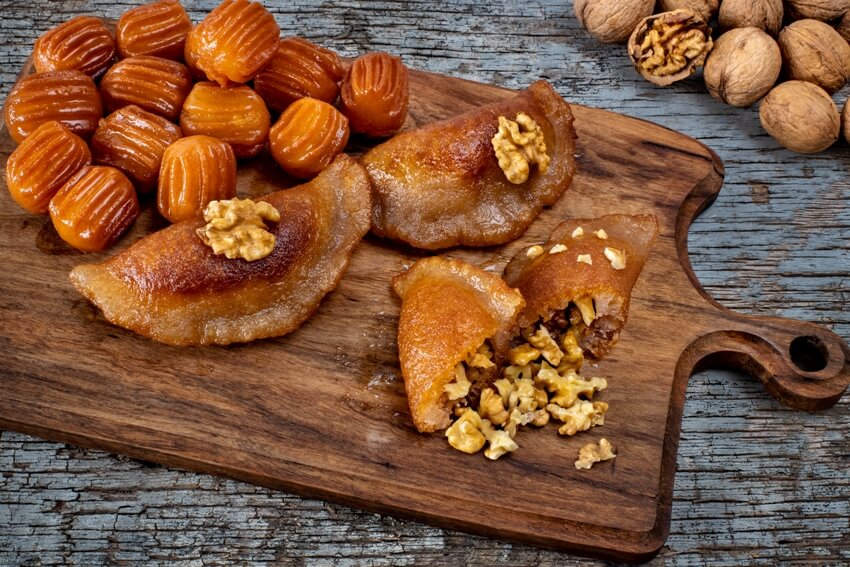
Very sensitive to variations in temperature – Although it is considered to be the hardest of the hardwoods out there, it doesn’t really hold up that well when it comes to being exposed to a wide range of temperature variations.
It cracks under hot temperatures, for one. So you need to be careful when it comes to exposing it to hot pans or anything that might directly have heat impact it.
It requires maintenance – In order to maintain its physical traits and appearance, a lot of maintenance is required. You need to make sure that it is periodically wiped down with a moist cloth. This is to get rid of dust and other debris that might’ve accumulated on the surface.
If not done so regularly, the wood might end up being too dry and might start having small cracks. You also can’t use ammonia-based cleaners as these may be too harsh on the wood and unsafe because you’re using the board for food items.
It is better to make a solution out of some warm water and some mild soap. You also need to oil your acacia wooden cutting board with some recommended food-grade oils in order for you to limit the risk of warping on the wood.
Its grain pattern is unpredictable and irregular – While some like the uniqueness that this brings in, others with cleaner and more minimalist tastes aren’t too fond of this feature of acacia. The wood is known to have many knots in it and they aren’t really known to have clean and straight lines which are oftentimes preferred for small pieces of wood such as cutting boards.
Knots are pivotal to the strength of the wood as they weaken the wood or as considered as “chinks in the armor”. It can also be difficult to slide it into existing décor if you have a specific theme for your kitchen.
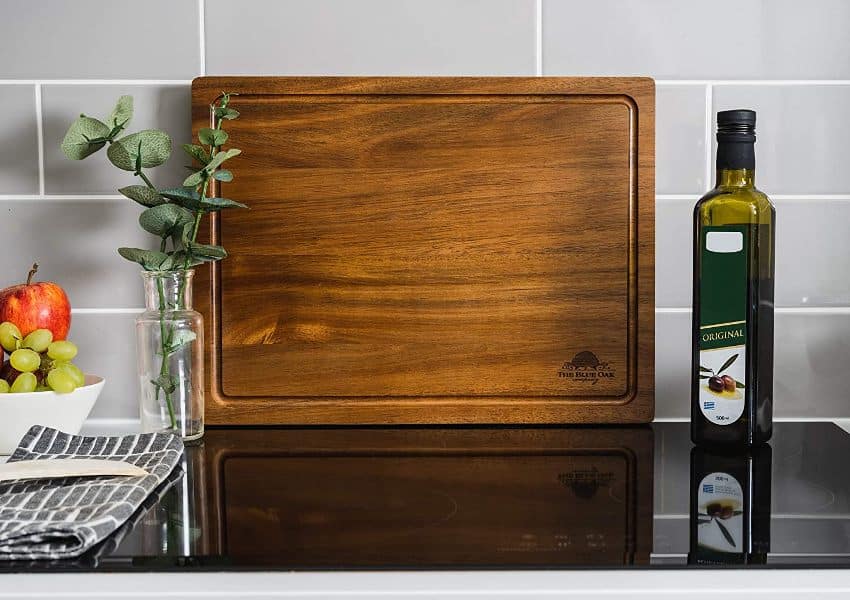
See this premium board at Amazon [sponsored link]
It’s a very heavy and hard type of wood – It has a rating of 2300 on the Janka hardness test. This means that it is technically much harder compared to oak or even hickory.
This is great in terms of durability but it also means that the wood is very difficult to work with from a craftsman’s perspective which is why a lot of the wooden boards in the market come in very simplistic designs. See our cutting board sizes guide here.
Acacia is expensive – It isn’t as expensive as rosewood or mahogany but then again, you very rarely ask for rosewood or mahogany chopping boards in the first place. Acacia is about twice to triple to quadruple the price of other readily available woods such as oak or maple, for example.
Is Acacia Good For Cutting Boards
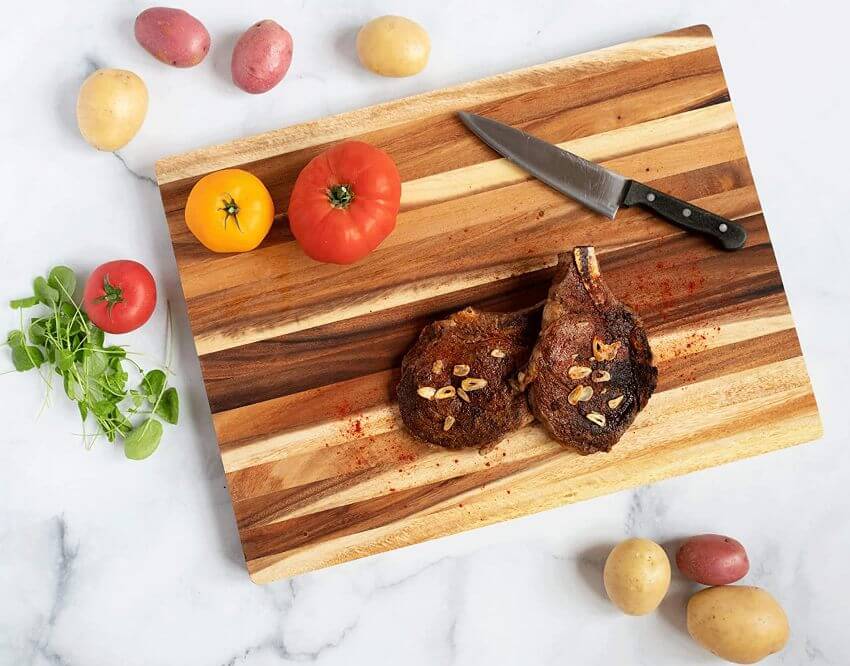
Acacia is much preferred as a cutting board material because of several reasons. For starters, it’s a hardwood so what this means is that it has natural oils.
This makes it naturally water resistant. It’s dense but not to the point wherein it will dull your knives, which is not the case when it comes to other similarly dense materials such as bamboo.
It’s also interesting how these wood-cutting boards are made. The trees are usually harvested at a fairly young age. This means that the planks and wood strips produced are much smaller.
Because of the youngness of the trees, most acacia boards tend to end up having a very blond-looking finish. This is very aesthetic in the kitchen, performs well in terms of knife care, and is antibacterial to boot; making it perfect when paired with food.
Cutting Board Care
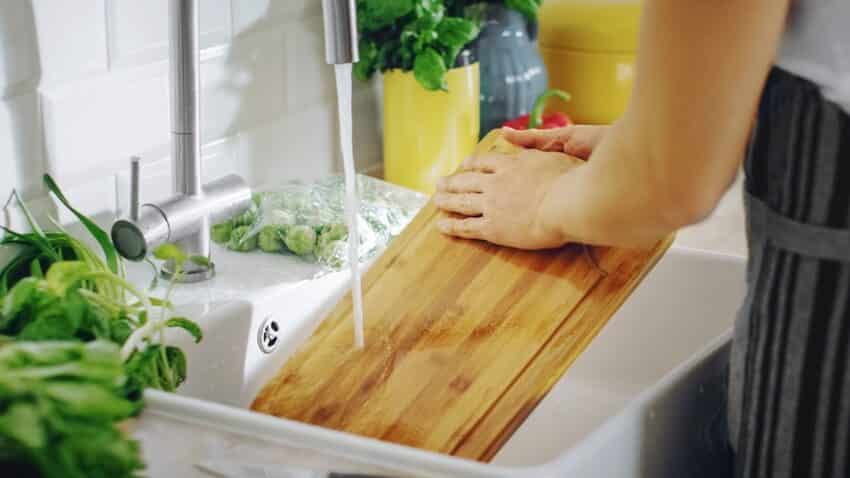
Since acacia cutting boards are considered specialty items, it would be best for you to wash them by hand and not wash them via dishwasher. Handwash your board with some warm soapy water and then leave it on a dishrack to dry.
You can pat it dry right after before keeping it in storage. If you want to make sure that it always looks its best, you can occasionally wipe some vegetable oil or any type of cooking oil on it.
Acacia boards are highly resistant to etching and scratching and they can last for a very long time but you need to make sure that you don’t soak them in water for prolonged periods of time.
This can cause the wood to warp and this can be permanent if not kept in check so always keep that in mind before just leaving your cutting board in the sink to soak in water along with the rest of the other stuff that you would need to wash.
Its resistance to scratches also means that its surface will not be easily punctured so there are fewer chances of your cutting board to encourage bacterial growth.
Does Acacia Cutting Boards Need Oil
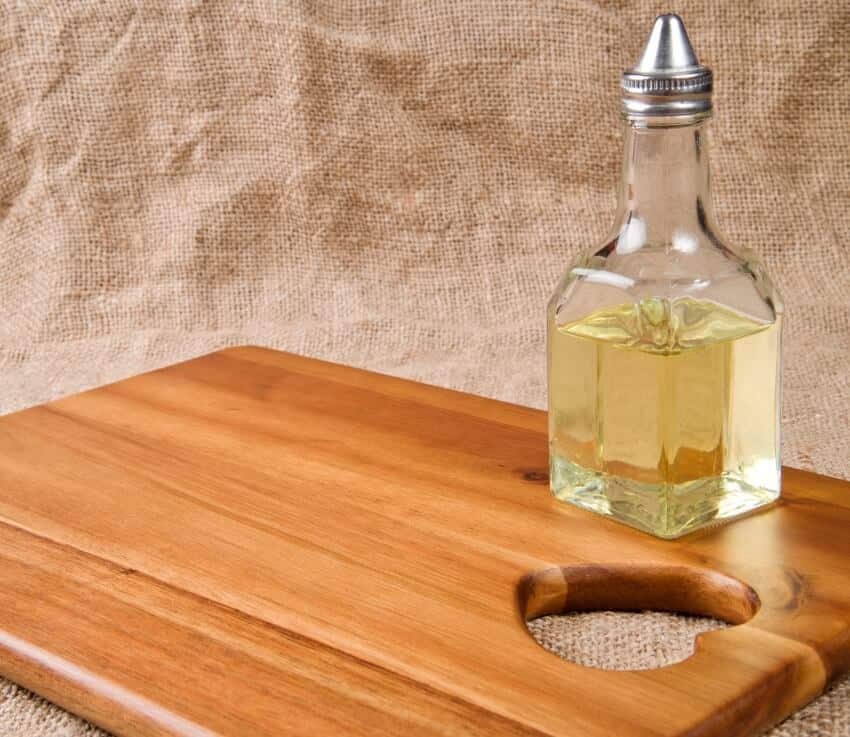
Yes they do. Oils are essential in keeping the luster on your wooden cutting board and in also ensuring that the surface doesn’t crack out of dryness.
Moisturizing it from time to time is a great way for you to prevent your board from warping or cracking over time. On top of all this, there are major advantages to oiling your board.
Aside from the extra layer of protection, it’s also a great way to keep your cutting board looking new. Whenever your board has lost its shine or dulled and you want to bring it back to its old glory, a quick oiling session can turn things around.
How To Clean

The first and cardinal rule to acacia wood cutting board care you need to know about is that you can never put it in the dishwasher.
Gently hand wash it with some soap and water, air dry it, then pat it dry before you store it. If you feel as if the wood has become a little too dry, you can restore its luster by occasionally rubbing some oil on it (food-grade, as much as possible).
If you feel as if this basic cleaning routine isn’t enough because you cut up something pungent on the board such as some fish and meat, you can amp up your cleaning routine by using some salt or baking soda and half a piece of lemon.
Another option is to use vinegar with baking soda as well. Scrub it gently and take extra precautions to not use a steel sponge or scrub.
Acacia Vs Bamboo
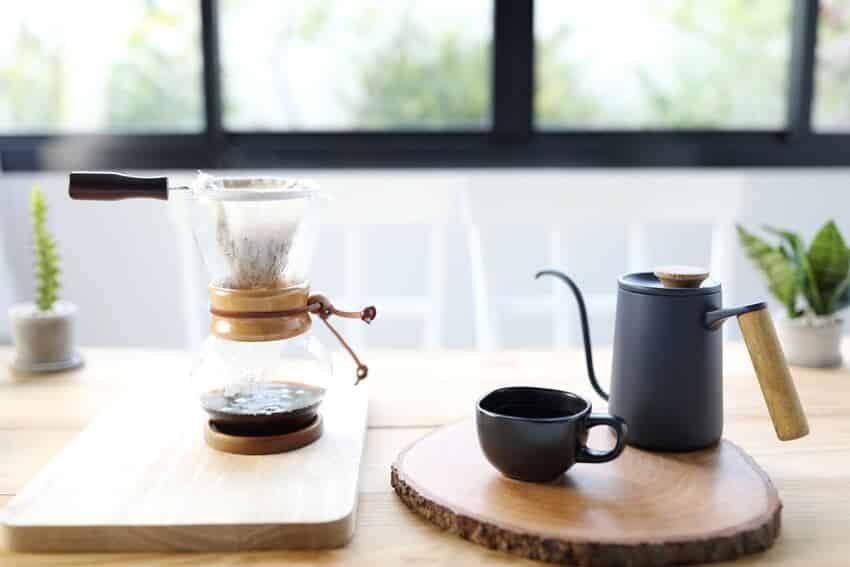
Bamboo is technically grass whereas acacia is a real type of hardwood. Both of them are amazingly water resistant.
The main difference is that bamboo is a grass which means that its water-resistant traits are because of the density of its material. Acacia’s water resistance comes from the fact that it’s a hardwood and hence, has natural oils that keep a layer of protection on its surface.
Acacia makes for much better cutting boards compared to bamboo because they’re dense enough to last you for a very long time without dulling your knives.
Bamboo cutting boards have been known to be quite harsh on knives which means that you will have to resharpen or replace your knives often with such a cutting board.
Visit our guide to different acacia wood furniture for more related content.


